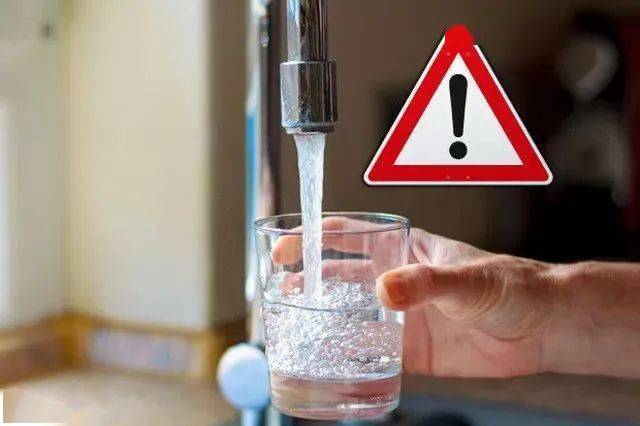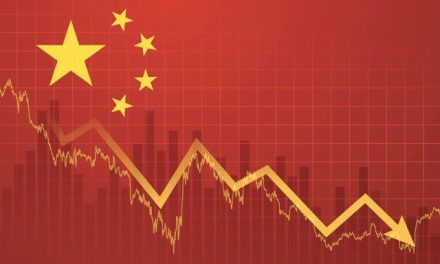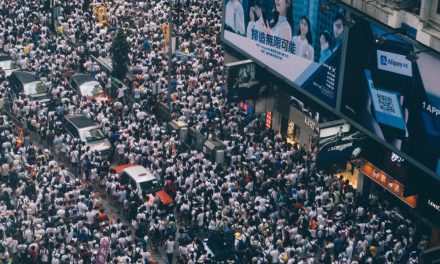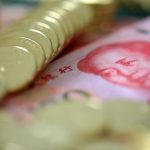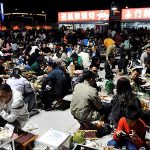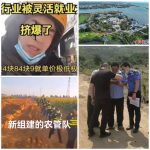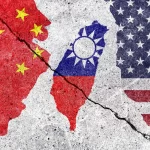By: Wang Wei Luo
Editor’s note: While antibiotic resistance has been a growing problem in the West for some time, the author says it is much worse in China, for reasons involving both the incentives in the medical system and patient demands.
Since November 2023, pediatric outpatient clinics and hospitalizations across China have been full, and antibiotic resistance when treating children has once again become a focus of attention. As early as April 2015, the School of Public Health of Fudan University in Shanghai conducted urine tests on more than 1,000 school children aged 8 to 11 in Jiangsu, Zhejiang, Shanghai and other places. The results showed that nearly 60% of children contained antibiotics in their urine.
Antibiotics, as drugs that kill or inhibit the growth of bacteria, have been widely used in the medical and health industries for a long time. In China, with its “Chinese characteristics,” antibiotics are also widely used in livestock and poultry breeding, fish and aquaculture, milk production and many other activities, and are also promoted as a measure to get rid of poverty and become rich. China is both a major producer and user of antibiotics. At the same time, antibiotic production is also regarded as an application of bioengineering in high-tech industries, thus is strongly supported by the Chinese Communist Party government. China controls the worldwide supply chain. In 2010, superbugs broke out in many places around the world, drawing international attention to antibiotic resistance.
A 2011 proposal by the Jiangsu Provincial Committee of the Chinese People’s Political Consultative Conference stated that China’s annual output of antibiotic raw materials is approximately 210,000 tons, of which 30,000 tons are exported, with the rest used in domestic medicine and agriculture. In 2020, China’s antibiotic production was 223,000 tons, and 84,000 tons were exported. From the data, it seems that the domestic use of antibiotics in China has decreased. In fact, this is not the case, as now China counts agricultural antibiotics separately. In 2020, China’s agricultural antibiotic production was 231,400 tons, almost all of which was used domestically. The excessive application and abuse of antibiotics in China has led to a large amount of residues entering surface water, groundwater and soil.
Antibiotic residues are a new, very harmful type of environmental pollutant. Medical personnel have pointed out that antibiotics cannot be completely metabolized after entering the human and animal bodies through drinking water or eating aquatic foods. After such ingestion over a long term, antibiotics via blood circulation spread throughout multiple organs, causing immunity to gradually decrease and ultimately endangering the Chinese nation’s survival.
Many Chinese scientists are committed to research on antibiotic residues in the water. In 2015, a research team from the Chinese Academy of Sciences published the “Antibiotic Pollution Map of China’s Rivers,” which revealed that antibiotics were detected in tap water from rivers to residents’ homes. When water, meat and vegetables containing antibiotic residues are consumed, the antibiotics will enter the human body, ultimately making the Chinese unable to cope with the arrival of “superbugs.”
The biggest problem encountered by the research team has been that there is currently no antibiotic concentration standard in China’s“Surface Water Environmental Quality Standards, nor in the Groundwater Environmental Quality Standards. Some media have reported that China’s major rivers from north to south are mired in antibiotic pollution, and river water is like “medicine soup.” A paragraph in the article called “Antibiotic Pollution in the Yangtze River Basin: New Agricultural Non-point Source Pollution Cannot Be Ignored,” published by the China Green Development Council and the China Biodiversity Conservation and Green Development Foundation in 2020, contains the remark that “Drinking water is like taking medicine.” As for the lack of antibiotic testing in drinking-water sources, the Yangtze River is the largest river in China, supporting more than 40% of the population and rich in wildlife. And according to a recent survey by the Yangtze River Protection and Green Development Research Institute, the average concentration of antibiotics in the Yangtze River is 156 nanograms per liter, which is much higher than that in Europe and North America. Antibiotic emissions in the lower reaches of the Yangtze River rank among the top three in the country.
And yet local environmental-protection officials of the Communist Party of China have said that they had not received any relevant reports of excessive antibiotics in water bodies, and they simply brush the concern off. And even as Chinese scientists have published article after article in professional journals about the problem of antibiotic residues in China’s water systems, local environmental-protection officials of the Communist Party of China have determined that no one has reported this problem, so they will not report anything to the top decision-making levels. Therefore, Xi Jinping has repeated his Two Mountains Theory [a phrase he uses to argue for policies to reconcile economic development and environmental], that the Yangtze River should be protected and developed, over and over again, and has placed high hopes on high-quality development of the Yangtze River Economic Belt. However, the Yangtze River water is seriously polluted, including contamination by antibiotic residues, and the so-called high-quality development of the Yangtze River Economic Zone is just cheap talk.
Since China’s current Surface Water Environmental Quality Standards and Groundwater Environmental Quality Standards do not include antibiotic indicators, surface water that has been seriously contaminated by antibiotic residues can still be used as raw water certified as high quality for tap-water production. The treatment systems of China’s water plants cannot remove antibiotic residues, allowing them to enter the human body via tap water, causing great damage to health. Antibiotic residues then re-enter the water through feces and urine, re-polluting the water system.
In 2021, a research team from the Institute of Military Medicine of the Academy of Military Sciences published a paper titled “Research Progress Regarding the Current State of Pollution by Antibiotic-Resistant Material in China’s Drinking Water and Technology to Detect It,” announcing the results of a specialized study on antibiotic content in tap water. The research team pointed out that China’s drinking water has many types of antibiotic-resistant-microbe (ARM) contamination and a wide range of concentrations. ARMs can be detected in water samples from different regions, and with the further development of detection technology, the number of detected ARMs is increasing. The detected abundance and types of ARMs in tap water from the Yangtze River Delta, Pearl River Delta, Beijing and Tianjin and other places are higher than in other water samples.
For more than ten years, many scientific workers have continuously pointed out that among the 106 indicators of the domestic drinking-water-quality standards promulgated by the state in 2006, none are antibiotic-related. Relying on the current set of drinking-water testing standards cannot determine whether residents’ drinking water is truly safe. Scientists believe that detecting antibiotic residues in drinking water is important and urgent, and strongly called on the government to include antibiotic residues in the new Chinese drinking-water quality standards. In 2022, the Chinese government announced new standards, to be implemented in 2023. However, it was very disappointing that the new water quality standards still do not have an antibiotic-testing component, and the new standards will also reduce the original water-quality standards from 106 to 97 items, even as the requirements for raw-water quality have been quietly lowered.
As Professor Li Ling from the China Economic Research Center of Peking University has pointed out, the fundamental reason for the abuse of antibiotics in China is that in the past three decades, the government suddenly withdrew from the medical and health fields that used to play a leading role, resulting in China’s medical and health service system becoming more profit-oriented, resulting in a situation of “encouraging sickness through medicine,” which has also made patients psychologically dependent on medicines, especially antibiotics, in their habits and thinking.
A mysterious pneumonia epidemic appeared again in November 2023, and antibiotic resistance once again became a focus of attention, once again exposing the undeniable fact that China’s surface and tap waters are seriously polluted. The pollution of tap water by antibiotic residues is the most serious in the Yangtze River Delta, the Pearl River Delta, and the Beijing-Tianjin-Hebei region, which are precisely the so-called three economic pillars that support Xi Jinping’s Chinese dream.

Figure 1: Antibiotic content in the Yangtze River exceeds the standard, and there is a long way to go to improve water quality. Image source: Internet screenshot.
I. China is both a major manufacturer and user of antibiotics
Antibiotics, as drugs that inhibit the growth of or kill bacteria, have been widely used in the medical and health industry for a long time. In China, with its Chinese characteristics, antibiotics are also widely used in livestock and poultry breeding, fish and aquaculture, milk production and many other ways, and are also promoted as a measure to get rid of poverty and become rich. The TV series “Mountains and Rivers” [1], staged in 2022 and with CCTV director Shen Haixiong as the chief producer, shows the “great achievements” of China’s rural-poverty alleviation led by Xi Jinping. Helping villagers in poor areas raise quail is an important measure in this regard. In order to prevent the quail from getting sick, Han Nana, a female college graduate who helped the village get rid of poverty, rushed to the county epidemic-prevention station to pick up the antibiotic gentamicin but was unfortunately killed in a car accident, which was the climax of the show. This plotline just illustrates the tip of the iceberg of antibiotic abuse in China. Doesn’t Shen Haixiong know that the consequences of abusing gentamicin are destroying the ecological balance? The benefits of any poverty alleviation cannot offset the damage to the environment.
In 1928, the British bacteriologist Alexander Fleming discovered the world’s first antibiotic, penicillin (also known as amoxicillin). In 1938, the German chemist Ernst Chain began to do purification experiments. A year later, the British pathologist Howard Florey also engaged in experiments. In 1945, these three scientists jointly won the Nobel Prize in Medicine for “the discovery of penicillin and its clinical utility.” In 1943, pharmaceutical factories in Western countries were first able to mass-produce penicillin. At this time, penicillin also entered China in small quantities. It was very expensive and was regarded as a miracle drug. In 1944, China’s first batch of domestically produced penicillin was born, which launched China’s production of antibiotics, but they were very rare. Until the mid-to-late 1960s, only relatively low-level antibiotics were used in China, and their use was strictly restricted. This further elevated the assessment of them as miracle drugs.
But the author went to the countryside to Beidahuang. The farmers there had fevers and were sick, and they all hoped to be treated with antibiotics such as penicillin. Sometimes after the patient has received one or two injections and his body temperature is under control, he immediately stops taking the injections. Instead of completing a course of treatment, the saved antibiotics are used for the next treatment.
After China opened up, many pharmaceutical companies from Western countries entered China, and China’s pharmaceutical companies mushroomed. At the end of the 1980s, China’s antibiotic production reached 11,600 tons, accounting for 46% of the world’s total production, ranking first in the world [2]. By the end of 2001, China’s annual penicillin production accounted for 60% of the world total, ranking first worldwide [3]. At the same time, antibiotic production is also regarded as bioengineering in high-tech industries and has received strong support from the Chinese Communist Party government, hoping to maintain its monopoly position.
In 2010, “superbug” infections were discovered in many countries around the world, such as India, Pakistan, the United States, Canada, Sweden, Greece, Israel, the Netherlands, the United Kingdom and Brazil. As of August 24, 2010, at least 170 people around the world had been infected, and there was a strong increase worldwide [4]. According to statistics, 10 million people now die every year around the world due to bacterial resistance. It is predicted that by 2050, bacterial resistance will cause economic losses of US$1 trillion to US$3.4 trillion worldwide every year [5].
In 2011, the Jiangsu Provincial Committee of the Chinese People’s Political Consultative Conference pointed out in its proposal “Recommendations for Strictly Monitoring the Use of Antibiotics” [6]:
“(China) produces approximately 210,000 tons of antibiotic raw materials every year, of which 30,000 tons are exported, and the rest used inside the country. Annual consumption by Chinese people is about 138 grams, which is 10 times the annual consumption of 13 grams by the United States. Among the top 15 drugs currently sold and used in China, 10 are antibacterial drugs. The cost of antibacterial drugs accounts for more than 50% of total drug costs, which is much higher than the 15% to 30% level abroad. The proportion of antibiotics used by inpatients in China accounts for 80% to 90%, and in some special use is as high as 100%. Among users, 58% use broad-spectrum antibiotics or a combination of two or more antibiotics, which is much higher than the approximately 30% proportion of antimicrobial drug use in hospitalized patients shown by WHO in an international survey. Many foreign experts even clearly point out that approximately half of the patients still fall into unnecessary use of antibiotics. The use of antibiotics in our country is characterized by widespread usage, large dosage, and high levels of broad-spectrum medicines and combined use. These characteristics reflect that China has become one of the countries that more seriously abuses antibiotics.”
Later, these data were often repeated in other reports.
According to the latest data to which the author has access, China’s antibiotic production in 2020 was 223,000 tons, domestic demand was 138,000 tons, and China’s export volume of antibiotics (excluding preparations) was 84,000 tons [7]. Judging from the data, it seems that the use of antibiotics in China has been significantly reduced. In fact, this is not the case, as agricultural antibiotics are now simply counted separately. In 2020, China’s agricultural antibiotic production was 231,400 tons, and its sales volume was 229,200 tons [8]. China’s total antibiotic production in 2020 is more than double the 210,000 tons estimated by the Jiangsu Provincial Committee of the Chinese People’s Political Consultative Conference delegation in 2011.
To sum up in one sentence: China is both a major producer and user of antibiotics. The abuse of antibiotics in China is very serious. The most worrying thing is that China will not be able to cope with superbugs or deadly bacteria in the future. Both terms refer not to specific types of bacteria, but to the bacteria that are resistant to multiple antibiotics. This makes patients infected with this bacteria likely to face a situation where there is no cure.
II. The government’s sudden withdrawal from its lead role in medicine and health is what led to antibiotic abuse
Since November 2023, pediatric outpatient clinics and hospitalizations across China have been full. There are many theories about why. The immunity of children has declined during the three-year epidemic, and antibiotic resistance in children’s medical treatment is increasing. Pictures of children doing homework while receiving intravenous drips in the hospital spread all over the country and abroad, arousing many comments. Most commenters thought that the lives of Chinese children were too miserable. A German pediatrician commented on this, saying that if these students can still sit at their desks and do homework for a few hours, it means that the students’ body temperature is not very high and there is no need for intravenous treatment. Many doctors in Germany believe that the human body has the ability to heal naturally, especially children. If the body temperature is not too high and the fever does not last long, they will recover naturally without the use of antibiotics. German doctors are cautious about using them because excessive use can cause serious harm to the human body.
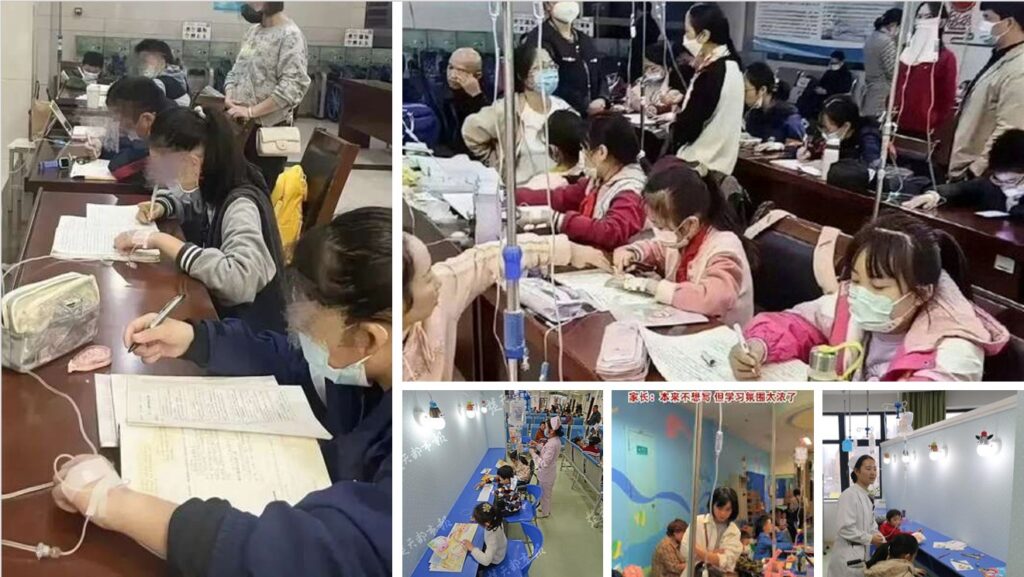 Figure 2: Children doing homework while receiving intravenous drips in the hospital. A German pediatrician commented that if these students can still sit at their desks and do homework for a few hours, it means their temperature is not very high and there is no need for IVs. Image source: Internet screenshot
Figure 2: Children doing homework while receiving intravenous drips in the hospital. A German pediatrician commented that if these students can still sit at their desks and do homework for a few hours, it means their temperature is not very high and there is no need for IVs. Image source: Internet screenshot
Si Xiaochen, a member of the Jiangsu Provincial Committee of the Chinese People’s Political Consultative Conference and a professor at Nanjing Medical University, revealed the huge economic interests behind the abuse of antibiotics: they are sold at high prices after being made at low cost, making them a cash cow for pharmaceutical companies, and pharmacies are trying their best to increase antibiotic sales. The system in which medicines are so lucrative for hospitals and doctors leads them both to pursue maximizing economic benefits and to indulge doctors’ unreasonable use of antibiotics [9].
Professor Li Ling of Peking University’s China Economic Research Center wrote an article [10], pointing out that data show that due to the abuse of antibiotics, China has an average consumption of 8 bottles of water per person per year, much higher than the international average of 2.5 to 3.3 bottles per person per year. The per capita annual consumption of antibiotics is about 138 grams, 10 times that of Americans, making it the world’s largest antibiotic user. Relevant data from the World Health Organization show that the antibiotic usage rate among hospitalized patients in China is as high as 80%, of which 58% use broad-spectrum antibiotics and antibiotic combinations, which is far higher than the international level of 30%. Professor Li Ling analyzed the reasons from a unique perspective:
First: In the past nearly three decades, China’s medical and health-service system has become more profit-oriented due to the government’s sudden withdrawal from the medical and health field, when it previously had played the leading role.
Second: In the face of this sudden change, hospitals could only adopt a medicine-supported mechanism to deal with the new financial realities. The increase in the income of medical staff who maintain hospital operations has led to serious over-medicating in China. The proportion of patients in China who take medicines is about fifty percent, which is rare worldwide. The misuse of antibiotics is particularly prominent in such overmedication.
Third: The abuse of antibiotics in China is not only promoted by hospital doctors, but also changes the medical behavior of patients. After thirty years of treatment primarily with drugs, Chinese patients have become dependent on drugs, especially antibiotics, in their thinking and habits. For general diseases, such as colds and coughs, patients often actively request antibiotics in hospitals. There are even doctor-patient disputes caused by doctors not using them. Patients who treat themselves often obtain antibiotics in pharmacies through various illegal means.
Professor Li Ling had pointed out that under this joint stimulus from the supply and the demand sides, the abuse of antibiotics in China’s medical system is extremely common. Even children use antibiotics in large quantities. Intravenous antibiotics are also common in newborn babies, which is shocking. In fact 80,000 people in China die directly or indirectly from the misuse of antibiotics every year, and the results from such use in terms of body damage and bacterial resistance are immeasurable. This has become an issue of great international concern.
The main sources of antibiotic residues in the environment include hospitals, households, pharmaceutical-manufacturing emissions, livestock breeding, and aquaculture. On the one hand, antibiotic residues are discharged into surface water through direct discharge of domestic sewage, medical wastewater, pharmaceutical wastewater, livestock and aquaculture wastewater or after being unable to be removed by sewage treatment plants. In addition, antibiotic residues can be discharged into surface water through medical waste, pharmaceutical factories’ waste, human, livestock and poultry excrement. They can also enter the soil from landfills, and then enter surface water or groundwater through infiltration. Surface water or groundwater is used to produce tap water, which enters the human body through drinking water and eating meals. Antibiotic residues in soil, surface water, groundwater and tap water will all migrate and cross-contaminate.
The cost of producing antibiotics in China is low, mainly because manufacturers do not have to bear the cost of losses caused by antibiotic residues in the environment. This is the so-called “environmental advantage” of China’s large-scale production of antibiotics. But those costs are nonetheless paid by someone, The losses caused by antibiotic residues to the ecological environment are not borne by the government nor by producers, but someone has to bear them, namely the general public and future generations.
III. The map of antibiotic pollution in China
Over roughly the last decade, many scientific workers in China have devoted themselves to the study of antibiotic residues in water. They have published many research articles in professional journals, for example “Preliminary Analysis of Antibiotics in Typical Wastewater in the Yangtze River Delta Region” published by Jiang Lei et al. in 2008. In 2022, Hu Ye et al. published “Spatial Distribution Characteristics and Sources of Pharmaceuticals and Personal Care Products (PPCPs) in Key River Sections of the Yangtze River during the Dry Season,” which used detailed data to illustrate that antibiotics are found in water in China’s rivers, canals, lakes, reservoirs and even tap water. The problem of residues is particularly concentrated in the Yangtze River Delta, Pearl River Delta and Beijing-Tianjin-Hebei region. The author has included the titles and sources of some relevant articles in the appendix of this article for the reference of interested readers.
Ying Guangguo’s research team at the Guangzhou Institute of Geochemistry and the Chinese Academy of Sciences conducted a watershed 10-year survey of China’s major rivers and various antibiotic-sales data from 237 pharmaceutical companies. It took two years to complete the study. Ying Guangguo recalled: “Over the years, it is unknown how many antibiotics we have used, either in humans or animals,” and lamented that there is no official report on the use of various types of antibiotics in China. This was his motivation for insisting on doing this research. At the beginning, he wanted to obtain some basic data from various government departments. But even though he visited the environmental protection, agriculture, food and drug, health and other departments, he found nothing. In 2015, the research team published the “Antibiotic Pollution Map of China’s Rivers,” which revealed that antibiotic pollution is widespread in China’s river environment. It also revealed that antibiotics were detected in home tap water coming from rivers. And when one consumes water, meat and vegetables containing antibiotic residues, the antibiotics will enter the human body, eventually leading to the arrival and outbreak of “superbugs.”
 Figure 3: Antibiotic discharge volume and discharge density in different river basins. A report released by Ying Guangguo’s research group at the Guangzhou Institute of Geochemistry and the Chinese Academy of Sciences shows that in order to support the industrial-breeding industry, tens of thousands of tons of antibiotics enter the water and soil through farmed animals and thus enter our bodies every year, causing serious resistance to various pathogens. Medicines, chickens, ducks, pigs, cattle, and fish are all contaminated. Among all river basins, the Beijing-Tianjin-Hebei Haihe River, the Yangtze River and the Xijiang River are the areas with the largest antibiotic pollution in the country, while the antibiotic content per unit area of the Pearl River ranks first in the country.
Figure 3: Antibiotic discharge volume and discharge density in different river basins. A report released by Ying Guangguo’s research group at the Guangzhou Institute of Geochemistry and the Chinese Academy of Sciences shows that in order to support the industrial-breeding industry, tens of thousands of tons of antibiotics enter the water and soil through farmed animals and thus enter our bodies every year, causing serious resistance to various pathogens. Medicines, chickens, ducks, pigs, cattle, and fish are all contaminated. Among all river basins, the Beijing-Tianjin-Hebei Haihe River, the Yangtze River and the Xijiang River are the areas with the largest antibiotic pollution in the country, while the antibiotic content per unit area of the Pearl River ranks first in the country.
Source: Internet screenshot
IV. China’s surface water quality environmental standards do not include a measure for antibiotics
The biggest problem encountered by the research team is that China currently does not even have standards for the concentration of antibiotics in the environment. Media reports say that China’s major rivers from north to south are mired in antibiotic pollution, and the surging river water is like a “medicine soup.” A paragraph in the article “Antibiotic Pollution in the Yangtze River Basin: New Agricultural Non-point Source Pollution Cannot Be Ignored,” [11] published by the China Green Development Council and China Biodiversity Conservation and Green Development Foundation in 2020, notes just that, that “drinking water is like taking medicine.” There is a lack of antibiotic testing of drinking-water sources. The Yangtze River is the largest river in China, supporting more than 40% of the population and ecologically rich. Yet according to a recent survey by the Yangtze River Protection and Green Development Research Institute, the average concentration of antibiotics in the Yangtze River is 156 nanograms per liter, which is much higher than that in European and North American countries. And antibiotic emissions in the lower reaches of the Yangtze River rank among the top three in China.
On April 26, 2020, guangming.com published a comment by columnist Zhang Tiankan entitled “Antibiotic content in the Yangtze River exceeds the standard, and there is a long way to go to improve water quality.” [12] It pointed out: “In recent years, as the protection of the Yangtze River continues to advance, the water quality of the Yangtze River Basin has significantly improved. However, many recent surveys have found that the concentration of antibiotics in the Yangtze River Basin is high and the water’s ecosystem has been damaged. What is even more worrisome is that about 40% of pregnant women in the Yangtze River Delta have been found to have antibiotics in their urine, as have nearly 80% of children. Veterinary antibiotics were detected, and some of the detected antibiotics are banned in clinical practice. This may seriously damage human immunity.” Since the water quality of the Yangtze River Basin has improved significantly in recent years as overall protection continues to advance, how can we explain the concentration of antibiotics in the Yangtze River Basin? If it is too high, will the water’s ecosystem be damaged? Many Chinese intellectuals do not dare to point out the problem directly. Instead, they first take a political stance, which ultimately leads to the source of the problem being unclear. Zhang Tiankan continued: “In line with the principle of ‘he who pollutes will clean up,’ it is also required to manage antibiotic producers and users. The first task is to strictly control the use of antibiotics and achieve rational use of them. The second is to control the production and discharge of antibiotics. Pollution-discharging units must ‘pay excessive sewage discharge fees in accordance with national regulations and be responsible for governance.’ This governance also includes the use of technical means to treat antibiotic residues in sewage and residues.” Polluter responsibility is in theory the basic principle of protecting the environment in China. But the effect has been very limited after more than 40 years of implementation. The result is actually that producers pay very low environmental-pollution fees and think that they have completed their environmental responsibilities. In many cases, the government deliberately exempts companies from such fees in order to enhance the local GDP. The state collects environmental-pollution fees, but the state is not responsible for controlling environmental pollution. Accumulated over a long period of time, China’s ecological and environmental burdens are much higher than these local burdens. And this is not a statement intended to speak ill of China.
With respect to this issue, local environmental protection officials of the Communist Party of China have stated that they have not received any relevant reports of excessive antibiotics in water [13].
 Figure 4: Local environmental protection officials say that no relevant reports have been received on the problem of antibiotic residues in the Yangtze River. Image source: shown in the figure
Figure 4: Local environmental protection officials say that no relevant reports have been received on the problem of antibiotic residues in the Yangtze River. Image source: shown in the figure
The statements of local environmental protection officials of the Communist Party of China have exposed a key problem in China’s ecological protection: misaligned information between the upper and lower levels of government. Xi Jinping has endlessly repeated his Two Mountains Theory [a theoretical framework for reconciling economic development and environmental protection], stating over and over again that the Yangtze River should be protected and not developed. He thinks the strategy is very effective, with green mountains and clear waters. And Chinese scientists have published one after another to this effect in professional journals. An article on the problem of antibiotic residues in China’s water systems (see the appendix of this article) will suggest that the Chinese Communist government should do this and that, and believes that it has fulfilled its obligations. But local environmental-protection officials in China said no one at that level actually reported the problem. Local officials are not even aware of it, and so naturally they will not report it to the highest decision-making levels. Xi Jinping has not received relevant reports on excessive antibiotics in water bodies, therefore this problem does not exist, and so he constantly demands high-quality development in the Yangtze River Basin. Chinese scientists, on the other hand, continue to continuously publish their articles documenting the problem in professional journals…
And to this point, once again, there are still no antibiotic indicators in China’s Surface Water Environmental Quality Standards and Groundwater Environmental Quality Standards.
V. Current status of antibiotic-resistant genetic contamination in China’s tap water
In 2016, Li Yanyan et al. published an article entitled “Research Progress in Detection Methods of Antibiotic Residues in Drinking Water” [14], pointing out that antibiotics, as drugs that kill or inhibit bacterial growth, have been used in a wide range of applications, among others food, clinical, veterinary medicine, and agriculture. However, the extensive use of antibiotics has caused their residues to enter surface water, thereby contaminating public-water sources. Standard water treatment cannot completely remove them, and they thus cause great harm to the human body, including allergies, fever, drug resistance and even obstructive anemia. Therefore, research on the detection of antibiotic residues in drinking water should be attracting widespread attention. These residues enter rivers and lakes and then enter the tap water that people drink every day.

Figure 5: Lack of antibiotic detection in drinking-water sources. Source: Internet screenshot.
In 2021, Yang Yiyi and other members of a research team from the Institute of Military Medicine of the Academy of Military Sciences published the paper “Research Progress on the Current Situation of Antibiotic Resistant Gene Pollution in China’s Drinking Water and Its Detection Technology” [15], announcing an analysis of their specialized research into the antibiotic content in tap water.
Yang Yiyi et al. pointed out that there are many types and a wide concentration of ARG [antibiotics with genes promoting drug resistance] contamination in drinking water in China. ARGs can be detected in water samples from different regions. Moreover, with the development of detection technology, the types of ARGs detected are increasing. Hao et al. found that the contamination of both intracellular antibiotic resistance genes (iARGs) and extracellular antibiotic resistance genes (eARGs) in the terminal water of Tianjin’s centralized supply pipe network was seasonal, with the highest abundance in summer. Tetracycline-resistant tetC and sulfonamide-resistant sul1 and sul2, and quinolone-resistant qnrA are the main contaminating species with eARGs, while sul1 and sul2 are the most abundant for iARGs. Using metagenomic sequencing technology, Ma et al. successively detected 265 ARGs subtypes in bacteria from drinking water samples in 22 cities in China, involving bacitracins, aminoglycosides, β-lactams, etc. Among them, bacitracin ARGs can be detected in all urban samples, and the abundance and types of ARGs detected in the Yangtze River Delta, Pearl River Delta, Beijing and Tianjin and other places are higher than in other water samples. Zhang et al. conducted a survey on bacterial ARG-contamination characteristics of water in centralized supply pipe networks in 71 cities in 28 provinces and cities in China. The results found that the abundance of sulfonamide-resistant ARGs in the water was the highest, followed by aminoglycoside- and tetracycline-resistant ARGs. Quinolone-resistant ARGs were the least abundant, but there was no significant difference in the average concentration of ARGs between different cities and regions. In recent years, super-resistant genes have been detected in drinking water. For example, the super-resistant genes MCR-1 and NDM-1 have been detected in water samples from tap water plants or pipe network water in Nanjing, Shanghai and other places.
The research team believes that antibiotic ARGs can be defined as a new type of environmental pollutant and are found in surface water, drinking water, groundwater and other water bodies.
Li Yanyan et al. in “Hygienic Standards for Drinking Water”” (2006 edition) emphasize that “chemical substances in drinking water must not harm human health.” However, Reddersen et al. found antipyrine and propanyrine in drinking water, and concentration of chiantipyrine were 0.400 and 0.120 μg/L respectively. Therefore, solving the problem of antibiotic contamination in drinking water in China must become a top priority.
VI. Chinese water-quality standards have no tests or indexes for antibiotics
In 2007, the Chinese Communist government promulgated the 2006 version of its Drinking Water Quality Standards (GB5749-2006). Officials from the Ministry of Health said that compared with the then-prevailing Drinking Water Hygienic Standards released in 1985, the new standards had the following three characteristics. First, they strengthened the water-quality requirements for organic matter, microorganisms and disinfection, and the number of items in the standards increased from 35 to 106. Second, the sanitary standards for drinking water in urban and rural areas were unified. Third, drinking-water standards were basically brought into line with international norms. The implementation of the new standards plays an important role in safeguarding the health of urban and rural residents, improving the quality of life of the people, promoting sustainable economic and social development, maintaining social stability and security, and building a harmonious socialist society [16].
According to regulations, the 2006 version of the “Drinking Water Quality Standards” were implemented on July 1, 2007. However, the products of water plants in various places were unable to meet the requirements of the new standards. Therefore, the implementation time was postponed to July 1, 2012, a full five years. At the same time, the requirements were relaxed. Each place decided, according to the local situation, whether to implement the 106 indicators. And only some indicators are tested. Although various places claim that all water-quality indicators meet the standards, few people believe it. Even the capital Beijing can only announce the results of water quality testing on one day a year, and keeps those for all other days confidential.
Since the 2006 version of the Drinking Water Quality Standards is difficult to fully implement in practice, since March 2018 the National Health Commission and relevant ministries and commissions have launched a new round of standard revision work.
Over the years, many Chinese scientists have pointed out that among the 106 indicators in the current national drinking-water-quality standards, there are none for antibiotics. It is thus impossible to rely on the current drinking-water testing standards to determine whether residents’ drinking water has any antibiotic indicators. Therefore, it is urgent to detect antibiotic residues in drinking water, including through food, animal or plant origin. The government must incorporate antibiotic residues into the Chinese drinking-water quality standards.
On March 15, 2022, the Chinese Communist Party released a new version of Hygienic Standards for Drinking Water (GB 5749-2022), to be officially implemented on April 1, 2023. These new drinking-water quality standards still did not include testing standards for antibiotics. They also reduced the number of water-quality standards from 106 to 97. The boasted increase in drinking-water-quality indicators from 35 to 106 in 2007 and the basic realization of drinking-water standards being in line with international standards have been revised down. Among the remaining 97 items, there are only 43 conventional indicators, and the remaining 54 items are extended, non-standard indicators, which can be inspected for or not.
Among the deleted indicators in the 2006 edition of the Drinking Water Quality Standards were heat-resistant coliforms, trichloroacetaldehyde, sulfide, cyanogen chloride (calculated as CN-), hexafluoride HCH (total), parathion, methyl parathion, lindane, DDT, formaldehyde, 1,1,1-trichloroethane, 1,2-dichlorobenzene and ethylbenzene. 4 additional items were added -$ perchlorate, acetochlor, 2-methylisobornyl alcohol, and geosmin. With 13 eliminated indicators and 4 added ones, there was a net reduction of 9 indicators. The names of three indicators including oxygen consumption have been changed. The limits for eight indicators including nitrates have been changed. Specific requirements for nuclide analysis and evaluation of total beta radioactivity indicators and the applicability of microcystin-LR indicators have been added [17]. Generally speaking, the requirements for drinking water quality were substantially reduced.
And there were two major changes in the 2022 version of the Drinking Water Quality Standards that were hidden outside the water-quality standards.
One change is the requirement for domestic drinking-water sources. There are two sources of drinking water in China: surface water and groundwater. For surface water, there is the Surface Water Environmental Quality Standard (GB-3838-2002), and for groundwater, the Groundwater Quality Standard (GB/T 14848-2017). From the 2022 version of the Drinking Water Quality Standards Section 5, water-quality requirements for drinking water sources:
5.1 When surface water is used as the source of drinking water, the water quality of the water source should meet the requirements of GB-3838.
5.2 When groundwater is used as the source of domestic drinking water, the water quality of the water source should meet the requirements of Chapter 4 of GB/T 14848-2017.
Now another regulation has been added:
5.3 A water source whose quality cannot meet the requirements of 5.1 or 5.2 is not suitable as a source for drinking water. However, when it needs to be utilized due to limiting conditions, corresponding water-purification processes should be used for treatment, and the treated water quality should meet the requirements of this document.
Surface water that is polluted cannot meet the Surface Water Environmental Quality Standards, and groundwater that is polluted cannot meet the Groundwater Quality Standards. Neither can thus be used as a source of drinking water. This is to ensure the quality of drinking water from water plants.
However, the 2022 edition of the Drinking Water Quality Standards now includes regulation 5.3. Both contaminated surface water and contaminated groundwater can be used as sources of drinking water, as long as they are treated with corresponding water-purification processes. Treated surface water or groundwater that meets the Surface Water Environmental Quality Standards and Groundwater Quality Standards can be used as a source of drinking water.
This shows that China’s surface water and groundwater are seriously polluted. If strict requirements are imposed and only qualified surface water and groundwater are allowed to be used as drinking-water sources, many water plants in China will face the problem of no water sources. However, if contaminated water is used as a source of drinking water, the quality of the tap water produced will naturally not be good.
How to tell whether the drinking water source in the city you live in is contaminated? Just take a look at whether the water plant in your city has a raw-water pretreatment system. According to the information available to the author, water plants in Beijing, Shanghai, Tianjin and other cities have such pretreatment systems, as do water plants in cities along the South-to-North Water Diversion Project.
When Beijing hosted the Summer Olympics in 2008, the drinking water from the Beijing Water Plant could not meet the water-quality requirements of the Olympic swimming venues. Therefore, a water treatment system was built in the Water Cube [the Beijing National Aquatics Center, used in the 2008 Olympics] to take in the domestic drinking water from the Beijing Water Plant as untreated water. The Water Cube water-treatment system was modified to meet the water-quality requirements of Olympic swimming venues.
Now, many smaller water-treatment devices for individual homes in China imitate the the system in the Water Cube. The tap water entering the home is used as a source of drinking water and is treated again by the household water-treatment device. Some people even buy large bottles of drinking water as a source of domestic drinking water and then process it through such household water-treatment devices. It can be seen how distrustful the Chinese people are of the Chinese Communist Party government’s Drinking Water Quality Standards and its implementation of water quality.
Another change is in the regulations for emergencies that affect water quality. The basis for relaxing sensory properties and general chemical indicators has changed from “approval by the people’s government at or above the municipal level” in the 2006 version to “subject to risk assessment,” with the evidence determined by the technical division at the lower level. In prior years, public emergencies affecting water quality occurred frequently, often causing trouble to people’s governments at or above the municipal level, and these officials became very impatient. Now that the power to handle emergencies in public affairs has been handed over to lower-level technical departments, people’s governments at or above the municipal level can have more time to concern themselves with political issues.
The 2022 version of the Hygienic Standards for Drinking Water did not listen to the opinions of scientific workers, and there is still no antibiotic-indicator testing standard. As Yang Yidi and others have pointed out, relying on the current drinking-water testing standards cannot determine whether residents’ drinking water meets the antibiotic indicators and whether China’s drinking water is safe.
Existing water treatment equipment in China’s waterworks cannot remove or reduce antibiotic residues. Even if the quality of tap water meets all 97 indicators, it may still be a dangerous stew that contains a high amount of antibiotic residue. Likewise, even the most advanced home-water treatment devices cannot remove or even reduce antibiotic residues.
China’s scientific and technological workers have been complaining about residual antibiotic content in China’s water systems, residual antibiotic content in China’s tap water, and that Chinese people drink water as if they were drinking medicine for more than ten years. Yet CCP officials said they have not received any reports of such complaints. Disgraceful!
Appendix:
Below the author lists the titles, publication dates and places of publication of assorted research reports here, in order to explain the falsity of Chinese Communist Party officials’ claim that they did not receive reports on the antibiotic residue content problem.
- 姜蕾、陈书怡、杨蓉等:长江三角洲地区典型废水中抗生素的初步分析,环境化学,2008年 (Jiang Lei, Chen Shuyi, Yang Rong, et al.: Preliminary analysis of antibiotics in typical wastewater in the Yangtze River Delta region, Environmental Chemistry, 2008)
- YANG Y, FU J, PENG H et al.: Occurrence and phase distribution of selected pharmaceuticals in the Yangtze Estuary and its coastal zone. Journal of Hazardous Materials, 2011
- JIANG L, HU X, YIN D et al.: Occurrence, distribution and seasonal variation of antibiotics in the Huangpu River,Shanghai, China, Chemosphere, 2011
- WEI R, GE F, HUANG S et al.: Occurrence of veterinary antibiotics in animal wastewater and surface water around farms in Jiangsu Province, China, Chemosphere, 2011
- 高立红、史亚利、厉文辉等:抗生素环境行为及其环境效应研究进展,环境化学,2013 (Gao Lihong, Shi Yali, Li Wenhui, et al.: Research progress on the environmental behavior of antibiotics and their environmental effects, Environmental Chemistry, 2013)
- YAN C, YANG Y, ZHOU J, et al.: Antibiotics in the surface water of the Yangtze Estuary: occurrence, distribution and risk assessment, Environmental Pollution, 2013
- 王丹、隋倩、赵文涛等:中国地表水环境中药物和个人护理品的研究进展,科学通报,2014 (Wang Dan, Sui Qian, Zhao Wentao et al.: Research advances in drugs and personal-care products in China’s surface-water environment, Scientific Bulletin, 2014)
- CHEN K、ZHOU J L.: Occurrence and behavior of antibiotics in water and sediments from the Huangpu River, Shanghai, China, Chemosphere, 2014
- 王丹、隋倩、吕树光等:黄浦江流域典型药物和个人护理品的含量及分布特征,中国环境科学,2014 (Wang Dan, Sui Qian, Lu Shuguang, et al.: Content and distribution characteristics of typical drugs and personal-care products in the Huangpu River Basin, Chinese Environmental Science, 2014)
- WU C, HUANG X, WITTER J D et al.: Occurrence of pharmaceuticals and personal care products and associated environmental risks in the central and lower Yangtze river, China, Ecotoxicology and Environmental Safety, 2014
- 章强、辛琦、朱静敏等:中国主要水域抗生素污染现状及其生态环境效应研究进展,环境化学,2014 (Zhang Qiang, Xin Qi, Zhu Jingmin, et al.: Research progress on the current status of antibiotic pollution in major waters in China and its ecological and environmental effects, Environmental Chemistry, 2014)
- XU J, ZHANG Y, ZHOU C et al.: Distribution, sources and composition of antibiotics in sediment, overlying water and pore water from Taihu Lake, China, Science of the Total Environment, 2014
- 胡丽霞:上海市水环境中药品和个人护理品(PPCPs)环境生态风险评价,上海:东华大学,2014 (Hu Lixia: Environmental and ecological risk assessment of pharmaceuticals and personal-care products (PPCPs) in Shanghai’s water environment, Shanghai: Donghua University, 2014)
- QI W, MVLLER B, PERNET-COUDRIER B et al.: Organic micropollutants in the Yangtze River: seasonal occurrence and annual loads, Science of the Total Environment, 2014
- 刘娜、金小伟、王业耀等:我国地表水中药物与个人护理品污染现状及其繁殖毒性筛查,生态毒理学报,2015 (Liu Na, Jin Xiaowei, Wang Yeyao, et al.: Current pollution status of pharmaceuticals and personal-care products in surface water in China and screening of their reproductive toxicity, Acta Ecotoxicologica Sinica, 2015)
- TANG J, SHI T, WU X et al.: The occurrence and distribution of antibiotics in Lake Chaohu, China: seasonal variation, potential source and risk assessment, Chemosphere, 2015
- ZHAO H, ZHOU J, ZHANG J.: Tidal impact on the dynamic behavior of dissolved pharmaceuticals in the Yangtze Estuary, China, Science of the Total Environment, 2015
- 胡冠九、陈素兰、穆肃等:江苏省某市典型饮用水水源中抗生素质量浓度特征,水资源保护,2016 (Hu Guanjiu, Chen Sulan, Mu Su, et al.: Quality concentration characteristics of antibiotics in typical drinking water sources in a city in Jiangsu Province, Water Resources Protection, 2016)
- ZHOU L J, WU Q L, ZHANG B B et al.: Occurrence, spatiotemporal distribution, mass balance and ecological risks of antibiotics in subtropical shallow Lake Taihu, China, Environmental Science: Processes & Impacts, 2016
- 潘潇、强志民、王为东:巢湖东半湖饮用水源区沉积物药品和个人护理品(PPCPs)分布与生态风险,环境化学,2016 (Pan Xiao, Qiang Zhimin, and Wang Weidong: Distribution and ecological risks of sediment pharmaceuticals and personal care products (PPCPs) in the drinking-water source area of the eastern half of Chaohu Lake, Environmental Chemistry, 2016)
- 武旭跃、邹华、朱荣等:太湖贡湖湾水域抗生素污染特征分析与生态风险评价,环境科学,2016 (Wu Xuyue, Zou Hua, Zhu Rong, et al.: Analysis of antibiotic pollution characteristics and ecological risk assessment in the waters of Taihu Gonghu Bay, Environmental Science, 2016)
- 刘娜、金小伟、薛荔栋等:太湖流域药物和个人护理品污染调查与生态风险评估,中国环境科学,2017 (Liu Na, Jin Xiaowei, Xue Lidong, et al.: Investigation and ecological risk assessment of drug and personal-care product contamination in Taihu Basin, China Environmental Science, 2017)
- DU J, ZHAO H, LIU S et al.: Antibiotics in the coastal water of the South Yellow Sea in China: occurrence, distribution and ecological risks, Science of the Total Environment, 2017 (Pu Haitao: Geographical distribution characteristics and source identification of pharmaceutical and personal care product pollution in surface water in the Beijing-Hangzhou Canal and coastal areas, Beijing: Chinese Academy of Geological Sciences, 2017)
- 朴海涛:京杭运河及沿岸区域地表水中药物及个人护理品污染地理分布特征及来源辨析,北京:中国地质科学院,2017. (Pu Haitao: Geographical distribution characteristics and source identification of pharmaceutical and personal-care product pollution in surface water in the Beijing-Hangzhou Canal and coastal areas, Beijing: Chinese Academy of Geological Sciences, 2017.)
- 张芹、张圣虎、汪贞等:骆马湖表层水体中32种PPCPs类物质的污染水平、分布特征及风险评估,环境科学,2017 (Zhang Qin, Zhang Shenghu, Wang Zhen, et al.: Pollution levels, distribution characteristics and risk assessment of 32 PPCPs in the surface water of Luoma Lake, Environmental Science, 2017)
- 闭凤丽、李志广、刘波等:南方某地区水体抗生素含量及风险评估,环境化学,2018 (Guan Fengli, Li Zhiguang, Liu Bo, et al.: Antibiotic content and risk assessment in water bodies in a southern region, Environmental Chemistry, 2018)
- CONG X, LEI C, YOU L et al.: Occurrence, impact variables and potential risk of PPCPs and pesticides in a drinking water reservoir and related drinking water treatment plants in the Yangtze Estuary, Environmental Science: Processes & Impacts, 2018
- 张国栋、董文平、刘晓晖等:我国水环境中抗生素赋存、归趋及风险评估研究进展,环境化学,2018 (Zhang Guodong, Dong Wenping, Liu Xiaohui, et al.: Research progress on the occurrence, fate and risk assessment of antibiotics in China’s water environment, Environmental Chemistry, 2018)
- 智建辉、宋晟宇、段雅欣:城镇污水处理厂进水抗生素抗性基因的控制与削减研究,水资源开发与管理,2018 (Zhi Jianhui, Song Shengyu, Duan Yaxin: Research on control and reduction of antibiotic resistance genes in the influent in urban sewage treatment plants, Water Resources Development and Management, 2018)
- PENG Y, FANG W, KRAUSS M et al.: Screening hundreds of emerging organic pollutants (EOPs) in surface water from the Yangtze River Delta (YRD): occurrence, distribution, ecological risk, Environmental Pollution, 2018
- 阮孙兰、赵洪伟、张禹、张腾云、张鸣珊、靳晓拓、黎平、刁晓平:东寨港红树林典型区域氯霉素抗性基因的分布,热带生物学报,2018 (Ruan Sunlan, Zhao Hongwei, Zhang Yu, Zhang Tengyun, Zhang Mingshan, Jin Xiaotuo, Liping, Diao Xiaoping: Distribution of chloramphenicol-resistance genes in the typical mangrove area of Dongzhaigang, Acta Tropical Biology, 2018)
- 王琦、武俊梅、彭晶倩等:饮用水系统中药物和个人护理用品的研究进展,环境化学,2018 (Wang Qi, Wu Junmei, Peng Jingqian, et al.: Research progress on drugs and personal-care products in drinking water systems, Environmental Chemistry, 2018)
- 苏志国、张衍、代天娇、陈嘉瑜、张永明、温东辉:环境中抗生素抗性基因与Ⅰ型整合子的研究进展,微生物学通报,2018 (Su Zhiguo, Zhang Yan, Dai Tianjiao, Chen Jiayu, Zhang Yongming, Wen Donghui: Research progress on antibiotic-resistance genes and type I integrons in the environment, Bulletin of Microbiology, 2018)
- 唐娜、张圣虎、陈玫宏等:长江南京段表层水体中12种磺胺类抗生素的污染水平及风险评价,环境化学,2018 (Tang Na, Zhang Shenghu, Chen Meihong, et al.: Pollution levels and risk assessment of 12 sulfonamide antibiotics in surface waters of the Nanjing section of the Yangtze River, Environmental Chemistry, 2018)
- 赵方园、杨新瑶、陈芳敏、阮丽丽、张海燕、杨悦锁:抗性DNA在水土环境中的迁移归趋与水平转移,环境化学,2018 (Zhao Fangyuan, Yang Xinyao, Chen Fangmin, Ruan Lili, Zhang Haiyan, Yang Yuesuo: Migration and horizontal transfer of resistant DNA in water and soil environments, Environmental Chemistry, 2018)
- LI S, SHI W, LIU W et al.: A duodecennial national synthesis of antibiotics in China’s major rivers and seas (2005-2016), Science of the Total Environment, 2018
- 智建辉、宋晟宇、段雅欣:城镇污水处理厂进水抗生素抗性基因的控制与削减研究,水资源开发与管理,2018 (Zhi Jianhui, Song Shengyu, Duan Yaxin: Research on control and reduction of antibiotic resistance genes in the influent of urban sewage-treatment plants, Water Resources Development and Management, 2018)
- 曹振华、张媛、马奔、王新宇、王若楠、黄雅梦、袁青彬:南京地区污水厂、自来水厂及长江中抗性基因MCR-1和NDM-1的污染特征,环境科学研究,2019 (Cao Zhenhua, Zhang Yuan, Ma Ben, Wang Xinyu, Wang Ruonan, Huang Yameng, Yuan Qingbin: Pollution characteristics of resistance genes MCR-1 and NDM-1 in sewage plants, water plants and the Yangtze River in the Nanjing area, Environmental Science Research, 2019)
- 曹双双:上海淀山湖水环境中典型PPCPs的多介质分布特征及风险评估,上海师范大学,2019 (Cao Shuangshuang: Multi-media distribution characteristics and risk assessment of typical PPCPs in the Dianshan Lake water environment in Shanghai, Shanghai Normal University, 2019)
- YANG H, LU G, YAN Z et al.: Occurrence, spatial-temporal distribution and ecological risks of pharmaceuticals and personal care products response to water diversion across the rivers in Nanjing, China, Environmental Pollution, 2019
- 封梦娟、张芹、宋宁慧等:长江南京段水源水中抗生素的赋存特征与风险评估,环境科学,2019 (Feng Mengjuan, Zhang Qin, Song Ninghui, et al.: Occurrence characteristics and risk assessment of antibiotics in source water of the Nanjing section of the Yangtze River, Environmental Science, 2019)
- 刘昔、王智、王学雷等:我国典型区域地表水环境中抗生素污染现状及其生态风险评价,环境科学,2019 (Liu Xi, Wang Zhi, Wang Xuelei, et al.: Current status of antibiotic pollution in surface-water environments in typical regions of China and its ecological risk assessment, Environmental Science, 2019)
- JIANG X, QU Y, LIU L et al.:PPCPs in a drinking water treatment plant in the Yangtze River Delta of China: Occurrence, removal and risk assessment, Frontiers of Environmental Science & Engineering, 2019
- 王国兰、冯金露、罗玲、楼莉萍:污水处理厂中四环素和磺胺类抗生素抗性基因的分布、传播及去除,应用生态学报,2019 (Wang Guolan, Feng Jinlu, Luo Ling, Lou Liping: Distribution, spread and removal of tetracycline and sulfonamide antibiotic resistance genes in sewage treatment plants, Journal of Applied Ecology, 2019)
- 张怡淼:抗性基因在水环境中的检测手段和去除技术,中国新通信,2019 (Zhang Yimiao: Detection methods and removal technology of resistance genes in water environment, China New Communications, 2019)
- 刘敏、殷浩文、许慧慧等:上海市水源中药品及个人护理品污染现状分析及生态风险评价,环境与职业医学,2019 (Liu Min, Yin Haowen, Xu Huihui, etc.: Analysis and ecological risk assessment of pollution status of traditional Chinese medicines and personal care products in Shanghai’s water sources, Environmental and Occupational Medicine, 2019)
- LIU M, YIN H W, WU Q: Occurrence and health risk assessment of pharmaceutical and personal care products (PPCPs) in tap water of Shanghai,Ecotoxicology and Environmental Safety,2019
- 陈晓、汪毅、丁志斌、李伟英、赵小兰、连小莹:饮用水生物安全现状、评价方法及对策措施,净水技术,2019 (Chen Xiao, Wang Yi, Ding Zhibin, Li Weiying, Zhao Xiaolan, Lian Xiaoying: Current status, evaluation methods and countermeasures of drinking-water biosafety, Water Purification Technology, 2019)
- 秀措、王尘辰、吕永龙等:潮汕地区入海河流及水生生物中PPCPs分布特征及风险评估,环境科学,2020 (Xiucuo, Wang Chenchen, Lu Yonglong, et al.: Distribution characteristics and risk assessment of PPCPs in rivers entering the sea and aquatic organisms in the Chaoshan area, Environmental Science, 2020)
- 汪琪、张梦佳、陈洪斌:水环境中药物类PPCPs的赋存及处理技术进展,净水技术,2020 (Wang Qi, Zhang Mengjia, Chen Hongbin: Occurrence and treatment technology progress of pharmaceutical PPCPs in water environment, Water Purification Technology, 2020)
- 陈贤、张彩杰、杨桂朋等:典型药物及个人护理品在黄东海海域水体中的检测、分布规律及其风险评估,环境科学,2020 (Chen Xian, Zhang Caijie, Yang Guipeng, etc.: Detection, distribution patterns and risk assessment of typical drugs and personal-care products in the water bodies of the Yellow and East China Sea, Environmental Science, 2020)
- 黄子晏、丁婷婷、杜士林等:沙颍河流域抗生素污染特征与生态风险评价,环境监控与预警,2020 (Huang Ziyan, Ding Tingting, Du Shilin, etc.: Antibiotic pollution characteristics and ecological risk assessment in the Shaying River Basin, Environmental Monitoring and Early Warning, 2020)
- 廖杰、魏晓琴、肖燕琴等:莲花水库水体中抗生素污染特征及生态风险评价,环境科学,2020 (Liao Jie, Wei Xiaoqin, Xiao Yanqin, etc.: Antibiotic pollution characteristics and ecological-risk assessment in the water body of Lianhua Reservoir, Environmental Science, 2020)
- 鲁金凤、王斌、廖洋、刘睿哲、曹轶群、梅园园、熊若萱:水环境中残留抗生素的消毒副产物问题最新研究进展,中国给水排水,2020 (Lu Jinfeng, Wang Bin, Liao Yang, Liu Ruizhe, Cao Yiqun, Mei Yuanyuan, and Xiong Ruoxuan: Latest research progress on disinfection by-products of residual antibiotics in the water environment, China Water Supply and Drainage, 2020)
- CAO S S, DUAN Y P, TU Y J et al.: Pharmaceuticals and personal- care products in a drinking-water resource of the Yangtze River Delta Ecology and Greenery Integration Development Demonstration Zone in China: Occurrence and human health risk assessment, Science of the Total Environment, 2020
- 李辉、陈瑀、封梦娟等:南京市饮用水源地抗生素污染特征及风险评估,环境科学学报,2020 (Li Hui, Chen Yu, Feng Mengjuan, et al.: Characteristics and risk assessment of antibiotic pollution in drinking water sources in Nanjing, Journal of Environmental Science, 2020)
- 卢亚楠、郭雅妮、王坤、陆伟东、王拓、柴玉峰、柳蒙蒙、钟慧、陈梅雪、魏源送:村镇生活污水处理设施抗生素浓度分布规律,环境科学,2020 (Lu Yanan, Guo Yani, Wang Kun, Lu Weidong, Wang Tuo, Chai Yufeng, Liu Mengmeng, Zhong Hui, Chen Meixue, and Wei Yuansong: Distribution patterns of antibiotic concentrations in domestic sewage-treatment facilities in villages and towns, Environmental Science, 2020)
- 张松:黄河流域典型药物和个人护理品的污染特征与生态风险,哈尔滨:哈尔滨工业大学,2020 (Zhang Song: Pollution characteristics and ecological risks of typical drugs and personal-care products in the Yellow River Basin, Harbin: Harbin Institute of Technology, 2020)
- 孙丽华、朱珺瑶、阳兵兵、刘烨辉、高呈、冯萃敏:BPAC-UF对二级出水中抗生素抗性基因去除效能研究,环境科学与技术,2020 (Sun Lihua, Zhu Junyao, Yang Bingbing, Liu Yehui, Gao Cheng, Feng Cuimin: Research on the effectiveness of BPAC-UF in removing antibiotic-resistance genes in secondary effluent, Environmental Science and Technology, 2020)
- 苏超、崔严:长江流域淡水生态系统内分泌干扰物、药物和个人护理品的风险排序,环境科学,2020 (Su Chao, Cui Yan: Risk ranking of endocrine disruptors, drugs and personal-care products in the freshwater ecosystem of the Yangtze River Basin, Environmental Science, 2020)
- 秦志伟:污水处理厂抗生素抗性基因分布和去除研究,环境与发展,2020 (Qin Zhiwei: Research on the distribution and removal of antibiotic-resistance genes in sewage-treatment plants, Environment and Development, 2020)
- 任丙南、耿静:三亚市水体中PPCPs的污染水平、分布特征及生态风险评价,环境科学,2021 (Ren Bingnan, Geng Jing: Pollution levels, distribution characteristics and ecological-risk assessment of PPCPs in water bodies in Sanya City, Environmental Science, 2021)
- 王若男、曹阳、高超等:沱江干流抗生素污染的时空变化和生态风险评估,环境化学,2021 (Wang Ruonan, Cao Yang, Gao Chao, et al.: Spatiotemporal changes and ecological-risk assessment of antibiotic pollution in the main stream of the Tuojiang River, Environmental Chemistry, 2021)
- 赵富强、高会、张克玉等:中国典型河流水域抗生素的赋存状况及风险评估研究,环境污染与防治,2021 (Zhao Fuqiang, Gao Hui, Zhang Keyu, et al.: Research on the occurrence and risk assessment of antibiotics in typical river waters in China, Environmental Pollution and Prevention, 2021)
- Tuqiao Zhang, Kunyuan Lv, Qingxiao Lu, Lili Wang, Xiaowei Liu: Removal of antibiotic-resistant genes during drinking water treatment: A review,Journal of Environmental Sciences, 2021
- 剧泽佳、赵鑫宇、陈慧等:石家庄市水环境中喹诺酮类抗生素的空间分布特征与环境风险评估,环境科学学报,2021 (Ju Zejia, Zhao Xinyu, Chen Hui, et al.: Spatial-distribution characteristics and environmental risk assessment of quinolone antibiotics in the water environment of Shijiazhuang City, Journal of Environmental Science, 2021)
- WU D, SUI Q, YU X, et al.: Identification of indicator PPCPs in landfill leachates and livestock wastewaters using multi-residue analysis of 70 PPCPs: Analytical method development and application in Yangtze River Delta, China, Science of the Total Environment, 2021
- LI X, ZHANG R, TIAN T et al.: Screening and ecological risk of 1200 organic micropollutants in Yangtze Estuary water, Water Research, 2021
- 李晋宇、陈泽业、吴敏、许士兰、梁海宁、罗敏、龙文芳:消毒对水中抗生素耐药基因去除及因素的进展,广州化工,2021 (Li Jinyu, Chen Zeye, Wu Min, Xu Shilan, Liang Haining, Luo Min, and Long Wenfang: Progress in the removal of antibiotic-resistance genes and factors in water by disinfection, Guangzhou Chemical Industry, 2021)
- ZHU F, WANG S, LIU Y et al., Antibiotics in the surface water of Shanghai, China: screening, distribution, and selection of indicators, Environmental Science and Pollution Research, 2021
- LI L, ZHAO X, LIU D et al.:Occurrence and ecological-risk assessment of PPCPs in typical inflow rivers of Taihu lake, China, Journal of Environmental Management, 2021.
- 陈宇、王涌涛、黄天寅等:骆马湖水体中药品及个人护理品的污染特征及风险评估,环境科学研究,2021 (Chen Yu, Wang Yongtao, Huang Tianyin, etc.: Pollution characteristics and risk assessment of pharmaceuticals and personal-care products in Luoma Lake water, Environmental Science Research, 2021)
- JIANG X, ZHU Y, LIU L et al.: Occurrence and variations of pharmaceuticals and personal-care products in rural water bodies: a case study of the Taige Canal (2018—2019), Science of the Total Environment, 2021
- YANG Y, CHEN Z, ZHANG J et al.:The challenge of micropollutants in surface water of the Yangtze River, Science of the Total Environment, 2021
- 张智博、段艳平、沈嘉豪等:长三角一体化示范区青浦区水环境中22种PPCPs的多介质分布特征及风险评估,环境科学,2022 (Zhang Zhibo, Duan Yanping, Shen Jiahao, etc.: Multi-media distribution characteristics and risk assessment of 22 PPCPs in the water environment of Qingpu District, Yangtze River Delta Integrated Demonstration Zone, Environmental Science, 2022)
- 胡烨、徐辉、王殿常等:长江重点江段枯水期药物及个人护理品(PPCPs)的空间分布特征及来源,环境科学学报,2022 (Hu Ye, Xu Hui, Wang Dianchang, et al.: Spatial distribution characteristics and sources of pharmaceuticals and personal-care products (PPCPs) in key sections of the Yangtze River during the dry season, Journal of Environmental Science, 2022)
Notes
[1]启播!总台电视剧《山河锦绣》致敬伟大脱贫攻坚,来源:中央广播电视总台央视新闻 | 2022年11月15日,https://www.cctv.com/2022/11/15/ARTID6shzkJoX7lg1fdr4vZw221115.shtmlcom
[2]中国科学院政策局吴志纯:我国抗生素产业的兴盛与落伍,中国生物工程杂志 1989, Vol. 9 Issue (5): 31-34,https://manu60.magtech.com.cn/biotech/CN/abstract/abstract2806.shtml
[3]百度百科:青霉素,https://baike.baidu.com/item/%E9%9D%92%E9%9C%89%E7%B4%A0/113678
[4]游心、方胜:全球170人感染“超级病毒”,第一财经日报,2010年8月24日,https://health.ifeng.com/longevity/special/superbug/content-1/detail_2010_08/24/2254723_0.shtml
文章所用的“超级病毒”,也称“超级细菌”。“超级细菌”不是指特定的某種細菌,而是指對多種抗生素具有抗藥性的細菌,這讓感染超級細菌的病人,很可能面臨無藥可醫的十分困难的局面。
[5]长江流域抗生素污染:新型农业面源污染不可忽视,2020年5月3日,中国生物多样性保护和绿色发展基金会网,http://www.cbcgdf.org/NewsShow/4854/12319.html
[6]严格监控抗生素的使用的建议,2011年提案,中国人民政治协商会议江苏省委员会网,http://www.jszx.gov.cn/wylz/zxta/2011ta/202205/t20220525_59159.html
[7]华经产业研究院–华经情报网:中国抗生素行业产量、需求量、出口量和市场规模分析,2022年3月21日,https://zhuanlan.zhihu.com/p/484559914
[8]2020年中国农用抗生素产量23.14万吨销量22.92万吨,世界农化网中文网报道,2021年6月30日,https://cn.agropages.com/News/NewsDetail—23488.htm
[9]司晓晨:抗生素滥用问题一天不解决我就不断提建议,2023年8月1日,南京中医药大学网,https://tzb.njucm.edu.cn/2014/0610/c2247a5480/page.htm
[10]北京大学中国经济研究中心经济学教授李玲:中国面临巨大的抗生素滥用风险,世界经济论坛,2013年,https://www3.weforum.org/docs/WEF_GRR_2013_LILIN_CN.pdf
[11]长江流域抗生素污染:新型农业面源污染不可忽视,2020年5月3日,中国生物多样性保护和绿色发展基金会网,http://www.cbcgdf.org/NewsShow/4854/12319.html
[12]张田勘:长江抗生素含量超标,水质改善任重道远,光明网,2020年4月26日,https://guancha.gmw.cn/zhuanlan/2020-04/26/content_33773549.htm
[13]长江抗生素”话题引关注,地方环保官员:未收到相关报告,一财网,2020年4月27日,刊登在新浪网,https://news.sina.cn/2020-04-27/detail-iirczymi8645178.d.html
[14]李艳艳、刘迎亚、范霄、曹英男、王佳佳、卢菊生、渠陆陆、耿俊峰、李海涛:饮用水中抗生素残留检测方法的研究进展,化学通报,2016年,Vol. 79,Issue (3), 213-219,http://www.ccspublishing.org.cn/fileHXH/HTML/hxtb/20160303.htm
[15]杨沂嫡、梁永兵、李君文、金敏:我国生活饮用水抗生素耐药基因污染现状及其检测技术研究进展,中国公共卫生,2021年,37(10),1575-1579,https://www.zgggws.com/cn/article/doi/10.11847/zgggws1132173
[16]卫生部就中国生活饮用水卫生标准举行专题发布会,中华人民共和国中央人民政府网,2007年6月30日,https://www.gov.cn/xwfb/2007-06/30/content_668102.htm
[17]广西壮族自治区卫生监督所:《生活饮用水卫生标准》2022年修订版将实施,2022年4月22日,http://wsjd.wsjkw.gxzf.gov.cn/xwdt/zhxx/t11799417.shtml
【议报首发,转载时请务必在正文之前加上出处和链接:https://yibaochina.com/?p=252070】
This piece was translated from Yibao Chinese. If republished, please be sure to add the source and link https://www.yibao.net/?p=247686&preview=true before the text when reposting.
【作者观点不代表本刊立场】
The views of the author do not necessarily represent those of this journal.

